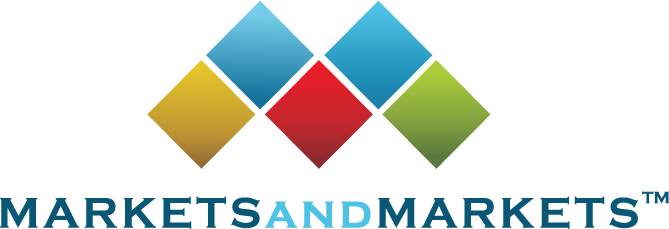
The global drug screening market is projected to reach USD 8.63 billion by 2022 from USD 5.32 billion in 2017, at a CAGR of 10.2% during the forecast period.
Growth in this market can largely be attributed to factors such as growing drug & alcohol consumption, enforcement of stringent laws mandating drug and alcohol testing, government funding in major markets, and regulatory approvals and new product and service launches. On the other hand, ban on alcohol consumption in Islamic countries and prohibitions of drug testing at workplaces in certain regions are some of the major factors that may hinder the growth of this market.
What are the opportunities in oral fluid testing?
Oral fluid is a promising new matrix for drug abuse testing programs at the workplace, drug treatment facilities, and pain management facilities. It has significant applications in drug abuse testing for law enforcement. The Department of Transport (DOT) is one of the major end users of drug testing services in the US. Owing to the various advantages offered by oral fluid testing, the DOT is considering the inclusion of this technique for drug and alcohol testing. The major advantages of oral fluid testing are easy collection processes, fewer chances of sample adulteration, and no requirement for special collection facilities. Owing to these advantages, oral fluid is expected to become the most widely used matrix for roadside testing. During roadside testing, oral fluid testing can provide rapid results to legislators and police officers and thus eliminate the need to transport the tested individual to a hospital or police station. Furthermore, oral fluid testing is expected to gain popularity in drug treatment and pain management programs, due to the easy sample collection process involved in this technique. However, for the rapid adoption of oral fluid testing, limitations such as inconsistent oral fluid and elution buffer volume, variable drug recoveries, and inadequate oral fluid immunoassay sensitivity and specificity need to be overcome.
Download PDF Brochure – https://www.marketsandmarkets.com/pdfdownloadNew.asp?id=162987773
Why is the accuracy and specificity concerns related to breathalyzers a challenge?
In certain cases, breathalyzers have provided inaccurate results owing to errors in distinguishing alcohol from other chemical compounds that contain a methyl group structure. Some alcohol testing machines not only identify ethyl alcohol (found in alcoholic drinks) but also any compound with a similar molecular structure. Human breath contains over 100 compounds, and nearly 70 to 80% of them contain the methyl group structure; hence, there is a probability of these chemicals being incorrectly detected as ethyl alcohol. For instance, the breath sample of a diabetic contains compounds, such as acetone, which would register on a breathalyzer. The National Highway Traffic Safety Administration has found that diabetes is characterized by elevated breath acetone levels. Acetone is one of the many substances that can be falsely identified as ethyl alcohol by some breath machines. Additionally, lip gloss, mouthwashes, dentures, paints, glue, thinners, cleaning solvents, foams used for hand hygiene, cigarettes, and even inhalers used for asthma can alter breathalyzer test results. Routine maintenance and recalibration of a breathalyzer by police officials is also vital. Failure to maintain, recalibrate, and test the breathalyzer results in additional errors. Therefore, inaccuracy associated with breath analyzers is one of the challenges, which may hamper market growth.
Request for Sample Pages – https://www.marketsandmarkets.com/requestsampleNew.asp?id=162987773
Browse Related Reports:
Cannabis Testing Market by Product & Software (LC, GC, Spectroscopy (MS, Atomic), Column, Standards, Accessories, LIMS), Service (Potency, Pesticides, Heavy Metal, Genetic Testing), End User (Lab, Pharmaceutical, Research) – Global Forecast to 2021
Specimen Validity Testing Market by Product (Reagent, Controls, Assay Kits, Disposables), Type (Laboratory, POC Testing), End User (Workplace, Drug Screening, Pain Management, Drug Rehabilitation Centers) – Global Forecast to 2023
About MarketsandMarkets™
MarketsandMarkets™ provides quantified B2B research on 30,000 high growth niche opportunities/threats which will impact 70% to 80% of worldwide companies’ revenues. Currently servicing 7500 customers worldwide including 80% of global Fortune 1000 companies as clients. Almost 75,000 top officers across eight industries worldwide approach MarketsandMarkets™ for their painpoints around revenues decisions.
Our 850 fulltime analyst and SMEs at MarketsandMarkets™ are tracking global high growth markets following the “Growth Engagement Model – GEM”. The GEM aims at proactive collaboration with the clients to identify new opportunities, identify most important customers, write “Attack, avoid and defend” strategies, identify sources of incremental revenues for both the company and its competitors. MarketsandMarkets™ now coming up with 1,500 MicroQuadrants (Positioning top players across leaders, emerging companies, innovators, strategic players) annually in high growth emerging segments. MarketsandMarkets™ is determined to benefit more than 10,000 companies this year for their revenue planning and help them take their innovations/disruptions early to the market by providing them research ahead.
MarketsandMarkets’s flagship competitive intelligence and market research platform, “Knowledge Store” connects over 200,000 markets and entire value chains for deeper understanding of the unmet insights along with market sizing and forecasts of niche markets.
Media Contact
Company Name: MarketsandMarkets
Contact Person: Mr. Shelly Singh
Email: Send Email
Phone: 1-888-600-6441
Address:630 Dundee Road Suite 430
City: Northbrook
State: IL
Country: United States
Website: https://www.marketsandmarkets.com/Market-Reports/drug-alcohol-screening-market-162987773.html
